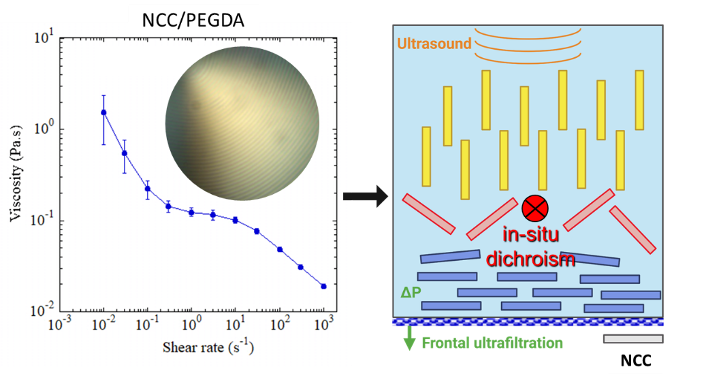- Share
- Share on Facebook
- Share on X
- Share on LinkedIn
Thesis defence
On October 15, 2025
Saint-Martin-d'Hères - Domaine universitaire

Orthotropic cellulosic based composites for cartilage tissue engineering
The poor regenerative capacity of articular cartilage is the cause of many diseases. Current treatments are unable to repair cartilage effectively in the long term. Researchers have therefore turned to tissue engineering, combining cells and biomaterials to reproduce the structure of articular cartilage. This orthotropic structure is characterized by collagen fibers and chondrocytes oriented vertically in the deep zone, obliquely in the intermediate zone, and horizontally in the superficial zone, giving it unique mechanical and functional properties. Techniques such as multilayer assembly can effectively mimic the structure and mechanical behavior of cartilage, but fail to reproduce the orthotropic organization in a single step. In this context, the objective of this work is to develop a biomaterial with an orthotropic structure that mimics that of articular cartilage by addressing these issues. First, a methodology combining frontal ultrafiltration (FU) and low-frequency ultrasound (US) was used to obtain an orthotropic organization of cellulose nanocrystals (CNC) in an aqueous or polymer phase. FU orients the CNC horizontally near the membrane, while US generates an acoustic current that orients the CNC vertically near the vibrating blade. At the interface, the two forces equilibrate, generating an isotropic organization. Small-angle X-ray scattering (SAXS) confirmed the expected orthotropic structure in aqueous CNC suspensions. To maintain this specific CNC organization, we investigated the feasibility of combining our process with UV curing of polyethylene glycol diacrylate (PEGDA). After UV curing, SAXS measurements showed that the orthotropic organization was maintained for a given acoustic power. The mechanical properties of the orthotropic hydrogels were then studied in combination with SAXS measurements. Compression tests revealed elastic behavior, with the structure returning to its initial state after compression. Mechanical tests confirmed a Young's modulus (E) of 0.76 MPa, close to that of articular cartilage. In addition, the swelling test in DMEM culture medium showed that the material reaches equilibrium without significant degradation over time. Finally, preliminary cytocompatibility tests confirmed the potential of our new nanocomposite materials for cartilage engineering applications.
Date
Wednesday, October 15, 2025 at 2:00 pm
Localisation
Saint-Martin-d'Hères - Domaine universitaire
Salle Chartreuse au CERMAV, 601 rue de la chimie, 38610 Gières.
- Share
- Share on Facebook
- Share on X
- Share on LinkedIn